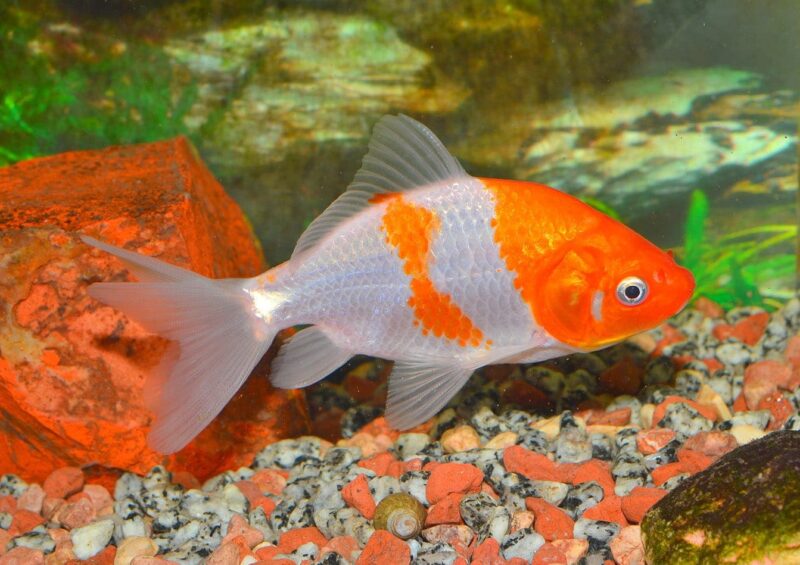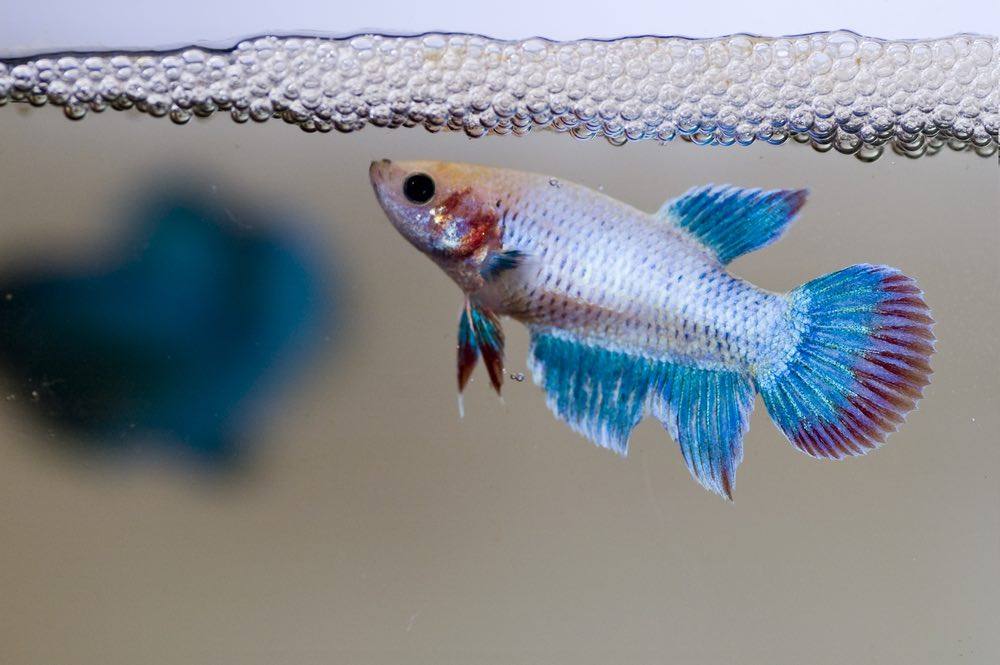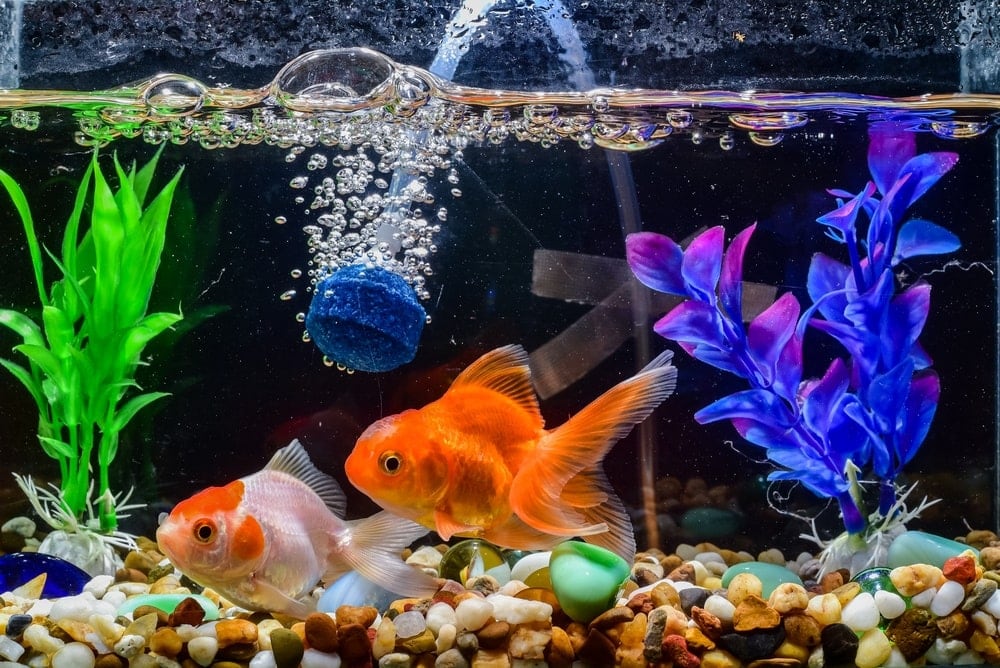Fish Tuberculosis (TB): The Secret Danger Lurking in Every Tank

Updated on

Today I want to talk about a little-known “silent killer” in the aquarium hobby. What it means to your fish…and what it means to you.
Let’s dive in and learn more about this secret danger!
What is Fish TB?
This disease goes by many names:
- Fish Tuberculosis (TB)
- Fish Tank Granuloma
- Swimming Pool Granuloma
- Fish handler’s disease
- Fish fancier’s disease
- Picine tuberculosis
- Mycobacteriosis
- Environmental NTM (Non Tuburculosis Mycobacteria)
- Environmental Mycobacteriosis (EM)
- In the past, Fish Consumption
This is because the same bacteria can affect people and animals. Get this: It can even transmit to reptiles, who have been known to contract the disease after living in aquariums previously used to house fish.
It is caused by a type of bacteria called mycobacteria. And contrary to popular belief: This fish disease is VERY common.
“[It’s] a deadly fish disease that is contagious and even humans can catch it. And it’s more common than you think it is.” {1}
– DR. RICHMOND LOH, Aquatic Veterinarian
This bacteria is ever-present in soil, lakes, oceans, some water and in other areas in nature. And it’s always in the biofilms of your fish tank, to varying degrees. {2}
Some strains are more virulent than others and can decimate entire systems in short order—especially when a new fish is introduced.
So, there is no way to totally eliminate ALL the bacteria that causes this through depopulation or other means – just reduce the numbers (though depopulation can be required in the case of a severe outbreak with a specific strain).
Not only that: Listen to the results of this study conducted in part by the USDA and the National Reference Laboratory for Mycobacteria:
“Among the investigated [pet store] fish, 79.4% (85/107) were positive for mycobacteria, with 8.2% (7 of 85) having two mycobacterial species present. Among the positive fish, the common pathogens M. marinum, Mycobacterium fortuitum (M. fortuitum group) and Mycobacterium chelonae were identified in approx. 90% of fish and other NTM species in 10%, including Mycobacterium peregrinum/septicum, Mycobacterium gordonae, Mycobacterium arupense, Mycobacterium kansasii, Mycobacterium ulcerans and Mycobacterium setense. The well-known human pathogen M. marinum was present in 10.6% of the positive fish (9 of 85). The species of mycobacteria identified in the study are not only recognized as aquarium fish pathogens, but can also cause pathology in humans.” {3}
Most pet store fish have been exposed to it and are already harboring it in their systems—a fact documented by multiple studies which indicate anywhere from approximately 40-80% of pet store fish test positive for mycobacteria, depending on where they are recovered from. {4}, {5}. {6}
In some cases, it just affects a single weak, stressed or old animal. In others, it can go rampant and devastate entire populations of fish.
(This disease seems to affect pet store and imported fish the most – something which was first observed around the turn of the 18th century and consistent with the my own experience.) {7}
So, what does it look like? Let’s talk about what it looks like in fish first.
Symptoms in Fish
This is aggravating: The symptoms in fish are often non-specific, and can mimic the symptoms of other diseases. Symptoms also can depend on the primary area of infection in the fish’s body.
Any one or a combo of the following externally visible signs can indicate Fish TB:
- Wasting / hollow belly
- Loss of appetite
- Listlessness
- Skin lesions/ulcers
- Fin erosion
- Bloating/swelling
- Dropsy
- White feces
- Bottom-sitting
- Spinal deformities
- Gill congestion
- Scale loss
- Loss of color
- Sunken forehead
- Pop eye
- Reddened skin
- White bumps on skin
- Mouth lesions
- Razorback
- Erratic swimming
You probably noticed most of these problems can be caused by other things, so just because your fish shows one or more of these does not automatically mean TB.
The most reliable way to tell is to have lab analysis done of the fish. But ruling out other possible causes through treatment & microscopy is also an accessible method of diagnosis.
If you suspect your fish is sick and want to ensure you provide the right treatment, we recommend that you check out our best-selling and comprehensive book The Truth About Goldfish on Amazon today. It has entire chapters dedicated to in-depth diagnoses, treatment options, a treatment index, and a list of everything in our fishkeeping medicine cabinet, natural and commercial (and more!)
TB typically progresses slowly over a period of weeks to months, unlike other diseases with similar symptoms. On the inside of the fish, the sure-fire sign of TB is white round nodules on the organs which are called granulomas.
Here’s what they look like waaaay close up, in the tissues of the fish:

(A necropsy has to be done to see these.) These round circular areas are where the immune system is trying to wall off the foreign bacteria causing the illness. TB can also make the fish susceptible to other bacterial infections.
Transmission (Fish to Fish)
Transmission depends on the strain of mycobacteria you are dealing with.
It is poorly understood, but the current line of thinking includes some or all of the following:
- In some cases, the fish actually needs to eat the dead body of an infected fish to catch it.
- Eating fish food that contains fish contaminated with TB can be a little-known culprit.
- It can live in the detritus at the bottom or in filters.
- It can enter through open wounds on the skin of the fish, including those caused by parasites (source).
- Snails can play a role in its transmission.
- Very powerful strains are transmitted through the water that is flushed through the gills of the sick fish. Fish that have direct contact with sick or infected fish can precede an outbreak of TB. Sharing equipment between tanks can transmit the bacteria.
- Or if the intestines are affected, it is spread by fish eating another sick fish’s fecal matter.
Not all fish who are exposed to it will come down with it, but they must be considered carriers from that point on.
Symptoms in People
Now: In people, fish TB is not the same as the tuberculosis in humans most of us have heard of – the “white plague” disease that caused much devastation up until recent years.
This is a totally different organism with a totally different set of symptoms. The most common symptom is painful, slowly growing sores on the extremities, such as the hands and feet. (Bacteria that cause this prefer cooler temps there as opposed to closer to your heart.)
If it becomes severe, it can infect the bones and even pose a significant danger to your health if it goes systemic.
In fact: Misdiagnosis can be a problem for those who contract it since it isn’t very common. But with a combination of the right antibiotics and prompt attention, in most cases it resolves without complications.
Fish tank granuloma as a skin infection is not contagious from person to person (source).
- Note: If you ever suspect you have contracted fish tank granuloma, it’s advisable to see a doctor and tell them you have a fish tank as it isn’t commonly diagnosed.
How to Treat Fish TB in Fish?
So, good news and bad news. Bad news first: Modern science has yet to find a cure for picine TB. Once a fish starts showing signs of it, the outlook can be bleak. This is because it means their immune system has shifted to the losing side of the battle.
Every fish exposed to the sick one—even the normal-looking one—must be considered a carrier.
In a group of fish: Your best hope is to remove (euthanize) the visibly sickly ones and work on boosting the immune system of the others so they don’t come down with it.
- Add vitamin C to the water (I use this water conditioner made of vitamin C each week)
- Raise the temperature to the high 70’s to low 80’s F.
- Use a UV sterilizer to keep the bacteria count in the water low and remove some burden from the immune system. It can even assist in reversing the condition (see success story here)
- Feed nutritious, high protein food (live foods are great)
- Maintain perfect water quality
- Add lots of biological filtration media to support a healthy bacteria population
If it goes rampant, the losses can be heavy. And you DEFINITELY don’t want your fish eating one who has died from it (this can spread the infection). If all or most of the fish are dying, your best bet might be to totally depopulate, sterilize everything and start over (every fishkeeper’s nightmare).
If you just have one sick fish? You can try to save it using the methods above – but the chances are low for recovery once it starts succumbing to TB.
Preventing TB in Fish
As with most diseases, prevention is the best treatment. You may not be able to entirely prevent it from being in your fish’s body, but you can help prevent it from attacking them.
The #1 tip? Using a UV sterilizer regularly is one way to ensure your water stays clear from this bacteria. UV sterilization is so powerful, it not only helps prevent infection and boosts the fish’s immune system, it can actually help in reversing the condition once a fish is showing signs of it. Any UV sterilizer that can kill suspended green algae can kill the Fish TB bacteria.
Now: TB is a big problem at pet stores. The fish have been through considerable stress of transport and are now housed in areas that are conducive to high levels of TB in their environment and in other surrounding fish. It’s probably an overlooked reason why so many pet fish die in the first few months of being taken home.
Now it looks like the fish just has a regular bacterial infection, but somehow no medication the fish owner supplies it with can help and the fish continues to decline until it dies. So, if you are getting fish from the pet store…
You need to understand there is a good chance your fish will not make it long, despite how good you take care of it. Even if it looks healthy initially.
TB is a slowly progressing disease that doesn’t always kill the fish right away (but it certainly can quickly bring death in extremely stressed fish). It is a very good idea to get fish from trusted breeders if possible.
Feeder fish tanks are mycobacterial farms. :'(
Is Fish TB Contagious to Humans?
The short answer? Yes, it is. BUT…. Chances of people actually contracting it are usually low, as it’s pretty rare in humans. Some people have gotten the same infection from swimming in the ocean or gardening, but that doesn’t stop most people from doing those activities.
So, don’t freak out and run around giving away your tanks.
However, risks are increased if you have a lower immune system or a break in your skin where the bacteria can enter, or if you ingest aquarium water.
Tips:
- You can GREATLY reduce this risk by wearing aquarium gloves while maintaining your tank.
- Use UV sterilizers in your fish tanks that contain fish from pet stores.
- Even if your fish may carry TB their whole lives, you can protect yourself. (And don’t use your mouth to start siphons!)
- Also: Never handle a sick fish with your bare hands. {3}
Be smart/cautious and you shouldn’t ever have to worry about it becoming a health problem for you.
- Related Read: Why You Should Wear Aquarium Gloves: 5 Crucial Reasons
Conclusion
While a formidable nemesis, fish tuberculosis can be managed if the fish are not subjected to considerable stress or poor husbandry. It’s also smart to take precautions as a hobbyist or pet store employee.
What are your thoughts?
Did you learn something new?
Leave your comment below!
Featured Photo Credit: JuanCarlosPalauDiaz, Shutterstock













